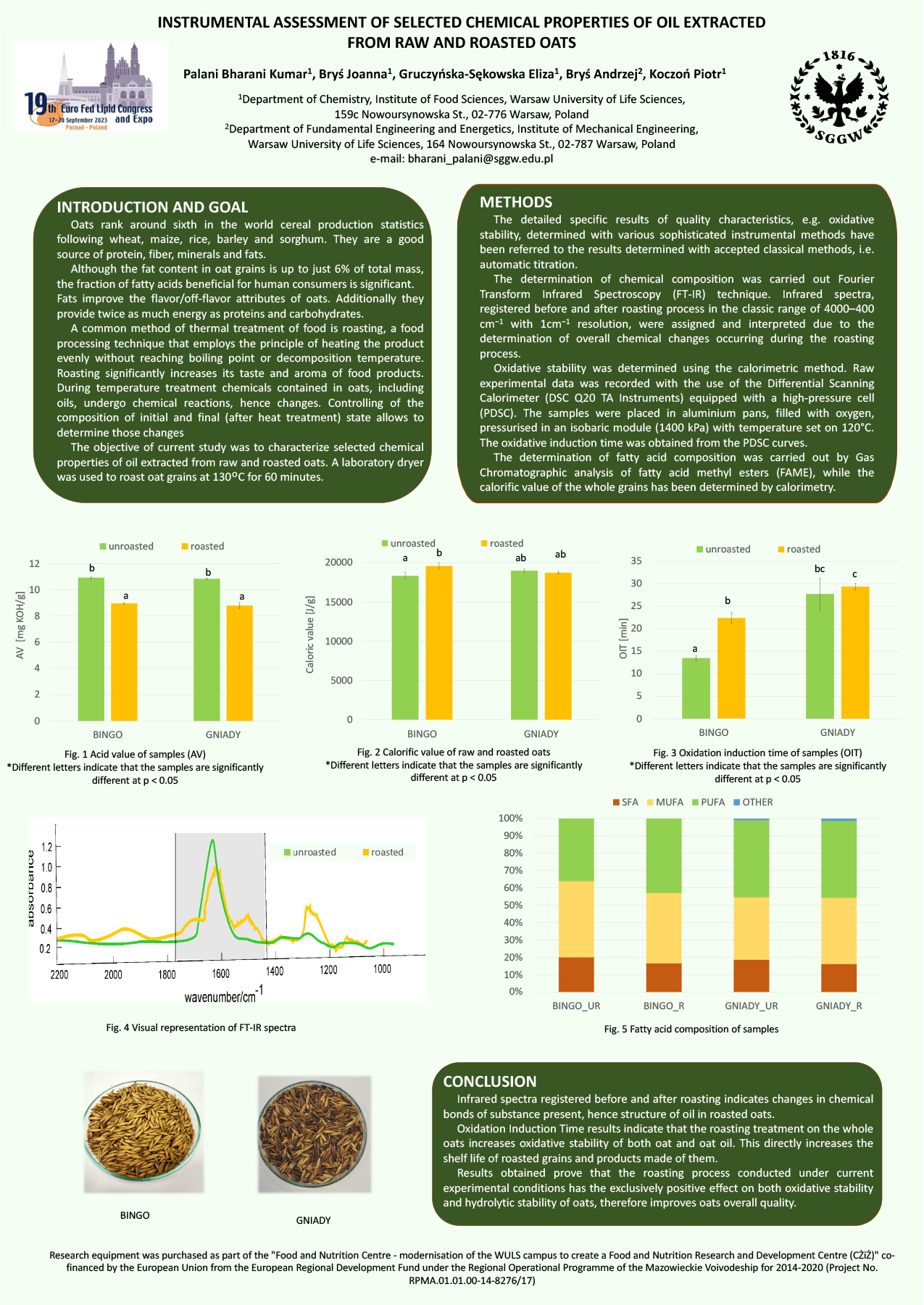Introduction and goal
Oats rank around sixth in the world cereal production statistics following wheat, maize, rice, barley and sorghum. They are a good source of protein, fiber, minerals and fats. Although the fat content in oat grains is up to just 6% of total mass, the fraction of fatty acids beneficial for human consumers is significant. Fats improve the flavor/off-flavor attributes of oats. Additionally they provide twice as much energy as proteins and carbohydrates. A common method of thermal treatment of food is roasting, a food processing technique that employs the principle of heating the product evenly without reaching boiling point or decomposition temperature. Roasting significantly increases its taste and aroma of food products. During temperature treatment chemicals contained in oats, including oils, undergo chemical reactions, hence changes. Controlling of the composition of initial and final (after heat treatment) state allows to determine those changes The objective of current study was to characterize selected chemical properties of oil extracted from raw and roasted oats. A laboratory dryer was used to roast oat grains at 130°C for 60 minutes.
Methods
The detailed specific results of quality characteristics, e.g. oxidative stability, determined with various sophisticated instrumental methods have been referred to the results determined with accepted classical methods, i.e. automatic titration. The determination of chemical composition was carried out Fourier Transform Infrared Spectroscopy (FT-IR) technique. Infrared spectra, registered before and after roasting process in the classic range of 4000–400 cm−1 with 1cm−1 resolution, were assigned and interpreted due to the determination of overall chemical changes occurring during the roasting process. Oxidative stability was determined using the calorimetric method. Raw experimental data was recorded with the use of the Differential Scanning Calorimeter (DSC Q20 TA Instruments) equipped with a high-pressure cell (PDSC). The samples were placed in aluminium pans, filled with oxygen, pressurised in an isobaric module (1400 kPa) with temperature set on 120°C. The oxidative induction time was obtained from the PDSC curves. The determination of fatty acid composition was carried out by Gas Chromatographic analysis of fatty acid methyl esters (FAME), while the calorific value of the whole grains has been determined by calorimetry.
Conclusion
Infrared spectra registered before and after roasting indicates changes in chemical bonds of substance present, hence structure of oil in roasted oats. Oxidation Induction Time results indicate that the roasting treatment on the whole oats increases oxidative stability of both oat and oat oil. This directly increases the shelf life of roasted grains and products made of them. Results obtained prove that the roasting process conducted under current experimental conditions has the exclusively positive effect on both oxidative stability and hydrolytic stability of oats, therefore improves oats overall quality.
